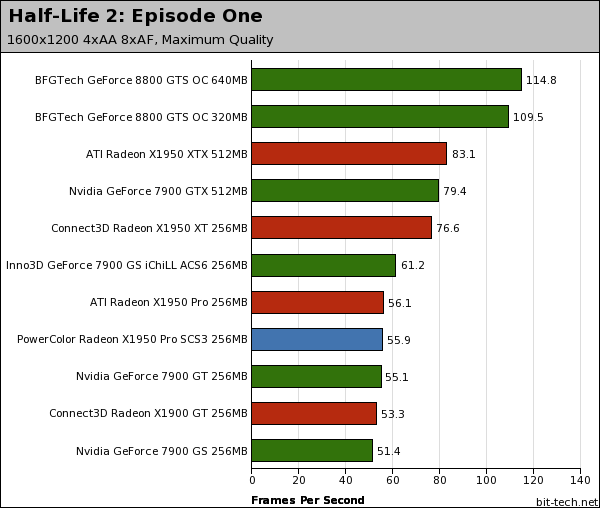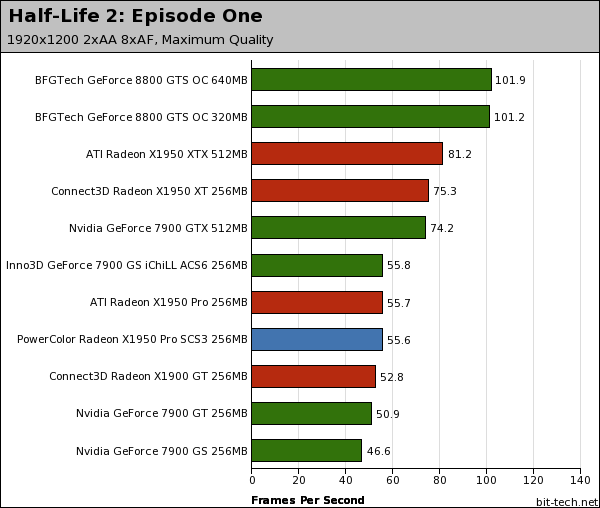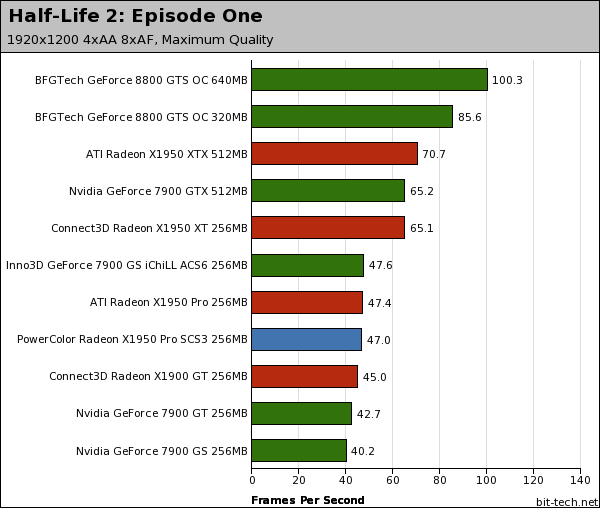
Half-Life 2: Episode One
Publisher: Valve SoftwareHalf-Life 2: Episode One is the first in a series of episodes that extends the Half-Life 2 story far beyond where the original left off. Valve has implemented its HDR rendering and used it to great effect in Half-Life 2: Episode One. There are also new higher-resolution textures, new facial animations and some AI improvements made in the new game too.
Anti-aliasing and anisotropic filtering were controlled from inside the game, and thus the drivers were left set to "Application Controlled". There are three options for the method of HDR used in this title. You can either disable HDR completely, make use of "Bloom" which is just what it says and less resource hungry in comparison to "Full" which, again is just what it says. It utilises a full dynamic range with the iris effect too.
We used a timedemo from a five minute portion of the Exit 17 level. The demo involves lots of HDR, lots of explosions and both indoor and outdoor scenes. The section we have used is typical of some of the more stressful areas in the game. Thankfully though, the game runs superbly on a wide range of hardware, while still looking absolutely stunning.






In terms of direct competition, Inno3D's GeForce 7900 GS iChiLL is slightly faster across the range of resolutions, but you're probably not going to see a great deal of difference in a real-world blind taste test. Taking that into account, the decision would then come down to image quality difference, which, frankly, favour PowerColor's Radeon X1950 Pro, courtesy of Nvidia's pretty poor filtering quality on its GeForce 7-series cards. This is especially true in many scenes in Half-Life 2 and its derivatives.

MSI MPG Velox 100R Chassis Review
October 14 2021 | 15:04










Want to comment? Please log in.